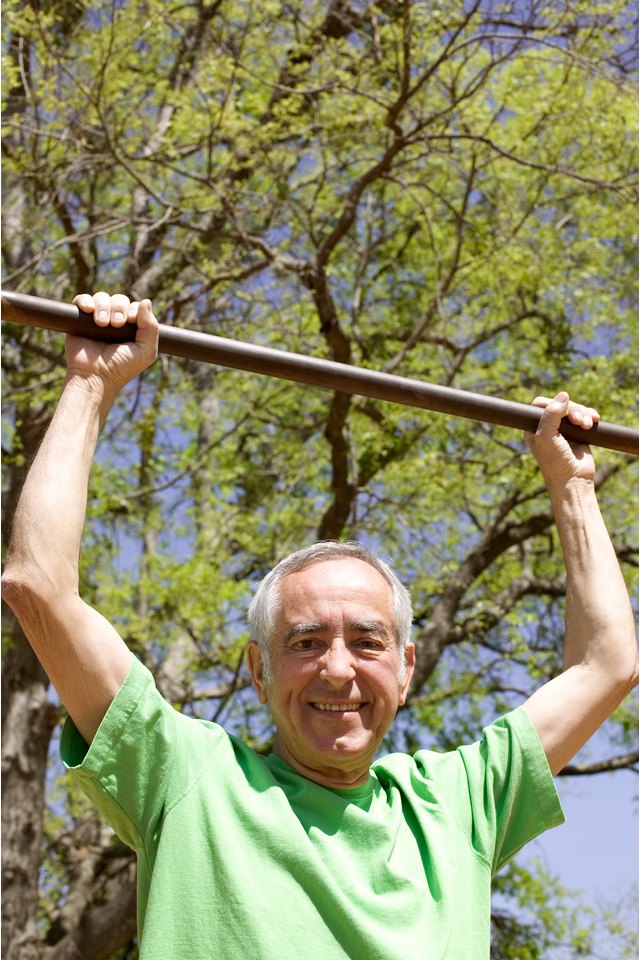What Plane of Motion Is a Pullup?

The action of a pullup takes place primarily in two planes of motion -- the sagittal and frontal. Varying the grip changes the plane of motion. Gripping the bar with your palms facing forward creates more frontal plane movement in the arms. The chin-up and neutral grip variations involve mostly sagittal plane movements.
Planes of Motion
The three planes of motion are oriented at right angles to one another. They are defined in reference to a standard position, called anatomical position: standing with the feet together and the palms facing forward. The sagittal plane is the imaginary plane that divides the body into right and left halves. The frontal plane splits the body into front and back halves, while the transverse or horizontal plane divides the body into upper and lower halves.
Movements
Kinesiologists use planes of motion to describe the movement of joints. Forward and backward movements, called flexion and extension, take place in the sagittal plane. Flexing and extending your elbows, for instance, is a sagittal-plane movement. Side-to-side movements, such as lifting your arms out to the side and bringing them down -- called abduction and adduction -- happen in the frontal plane. Rotational movements occur in the transverse plane.
Pullup Position
In a traditional pullup, you hold the bar with your palms facing forward, called a pronated grip. Pronating the forearms takes place in the transverse plane. To grasp the bar, your fingers flex, which is a sagittal plane action. To pull yourself up, you flex your elbows, which is also a sagittal plane movement. As you draw your elbows toward your waist to pull up, your upper arms adduct. Adduction happens in the frontal plane.
Chin-Up Grasp
The chin-up is a variation of the pullup in which the palms face backwards. In a chin-up, the upper arms typically move forward and backward rather than laterally. To pull yourself up, you pull your upper arms down. That action is called extension, a sagittal plane movement. The neutral grip pullup begins with the palms facing one another. In this variation, the arms also primarily move in the sagittal plane.
References
- Kinesiology of the Musculoskeletal System: Foundations for Rehabilitation; Donald A. Neumann
- Anatomy of Strength Training; Pat Manocchia
- Strength Training Anatomy; Frederic Delavier
Writer Bio
Joe Miller started writing professionally in 1991. He specializes in writing about health and fitness and has written for "Fit Yoga" magazine and the New York Times City Room blog. He holds a master's degree in applied physiology from Columbia University, Teacher's College.
